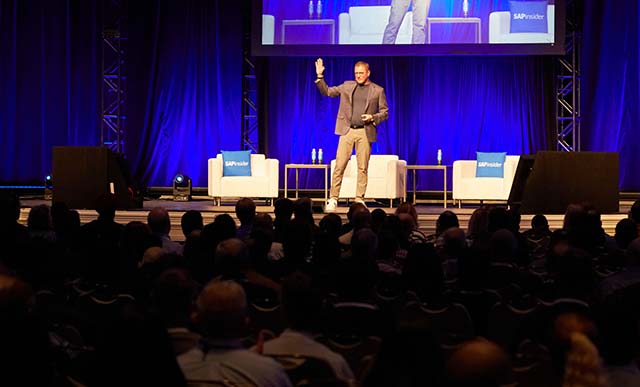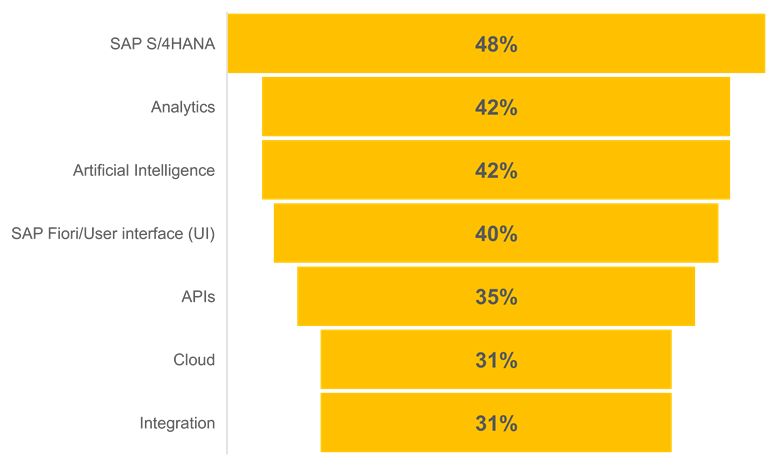Data Centricity and a Modern Digital Transformation
In an Exclusive Q&A, Paul Lewis, Chief Technology Officer at Hitachi Vantara, Discusses Digital Strategy and Shifting IT Objectives
It’s important to develop a sound data strategy before charting an overall digital transformation course, especially because there is no handy reference book that plots out the one unassailable way to become a true digital enterprise. With a firm understanding of why a data-centric mindset and strategy is important, organizations can better envision how IT and the business will change as the digital journey begins to take shape. Paul Lewis, Chief Technology Officer at Hitachi Vantara, defines what a successful data strategy for digital transformation looks like, shares the steps to take to get there, outlines the goals for digitizing the enterprise, and discusses the trend toward verticalization in this exclusive SAPinsider Q&A.
Q: How has the approach to digitization evolved throughout your career as a technologist?
A: Prior to Hitachi Vantara, I spent nearly 25 years in financial services, about 20 of which were working as a senior technology executive. A lot of my business background is in the retail side of mortgage banking and in the enterprise consumer side, solving technology issues for the business which is somewhat different than here on the vendor or manufacturing side where we’re focused on solving more holistic problems across a variety of consumers. While interacting with clients and prospects, I’ve seen first-hand the high cost of operating services, hardware, and software as well as the economic impact decisions pertaining to this technology have on the enterprise.
Explore related questions
There has been a noticeable shift in IT shops from a focus on standardization to becoming a partner to the business which can be measured by revenue, growth, and value rather than blinking lights in a data center. This ongoing transition has reached a critical mass to where there is now general acceptance of IT as more of a value driver than just a provider of applications.
Q: Why are data-centric data strategies becoming more relevant?
A: When comparing the time and value of infrastructure or applications to data, it’s almost a 180-degree shift. Infrastructure or applications last for a certain number of years; if companies try to extend the life cycle, they will eventually run into issues related to performance, scalability, and availability. The more infrastructure or applications they add to cushion the blow, the more cost they incur — and the cycle starts over.
Data is the opposite; it’s valuable from the point of creation until the point of deletion — if it is deleted at all. Data’s value to the organization increases over time, and more value is created as data is added. The more data companies have, the more precise and valuable their statistical, mathematical algorithms to refine that information become. The key to unlocking innovation starts with having the mindset that data is an insight creator and value producer, whereas applications and infrastructure are, in many ways, the burden to IT that slow innovation down.
Q: What steps can an organization take to reach that mindset and evolve into a data-centric infrastructure?
A: The first step is to view data as an asset — versus a side effect — that should naturally be produced to generate insight. The second step is to attach ownership to the asset. Ideally, this owner is a vice president of data or chief data officer who not only recognizes the value of data, but also incorporates stewardship, analytics, and potentially even storage and protection. The person in this role should treat data as the goal and the entity of purpose; from there, a cohesive data strategy can emerge as the logical next step.
In a nutshell, an organization needs four capabilities: First is a data management capability, which means creating data as a source and abstracting it from the infrastructure as something that must be managed as its own entity. Second is data governance, which includes compliance, stewardship, security, and protection — where data is like an application with its own user ID and password. Third is data mobility, which entails abstracting data away from the application and making that information available to people, places, and things to be re-used for completely different business purposes if needed. Fourth is analytics, which means having statistical, mathematical algorithms to define the insights that create value outside of the original purpose of the application itself. Together, this is what can be referred to as a “data strategy,” and since it’s usually for digital transformation, a data strategy for digital transformation.
Q: How does a data strategy position an organization to benefit from emerging technologies such as machine learning and artificial intelligence?
A: A direct result of a data-first approach is for intelligent application consumers to get an appropriate answer at the right time, without having to query the application; data becomes the primary factor in any one business decision, not the application itself. Therefore, there is a new architectural standard for application development that recognizes a new operational workflow where data is available to various users at different times. Machine learning and artificial intelligence extend the concept by introducing algorithms to either derive new insight or to predict what might happen in the future based on past data.
The purpose for introducing these data-centric technologies circles back to the goal of digital transformation, which is to create logistical or operational efficiencies, modify the customer experience so the seller’s experience matches the buyer’s, and explore diverse operational expense models, such as pay-per-use or leasing, instead of just taking cash for product. To implement those digital transformation business changes, companies need datacentric technologies to support them.
Q: How do data-centric technologies impact the business from an operational technology perspective?
A: Verticalization has a pretty big impact on how organizations consume technology. Previously, companies mainly consumed horizontal technologies — a platform for storage, an application development platform, and a platform for communication — purchased separately and implemented into the business. The trend today is toward verticalization, which is evident in companies like SAP where there’s investment in the functional module (such as industrial manufacturing, retail, and fashion) and in features in the actual ERP system versus a horizontal platform. The cloud, too, is becoming much more vertical sensitive, where a driver isn’t so much pay-per-use as it is buying into an industry-specific cloud environment — like healthcare, for example — with built-in regulatory and legislative requirements.
The natural progression for implementations is creating these verticalization opportunities. Internet of Things (IoT) technology is a good example; there’s not a lot of platform reuse between looking for cancer cells and parking a car. Over time, we’ll find that consumption will tilt toward full vertical solutions rather than development platforms. It’s a modernization trend that puts a premium on co-creation; partners and technology vendors might deliver 80% of functionality in a best-practices vertical solution, with organizations providing the last mile of innovation to close the gap.
Q: Are there any common misconceptions about what it means to become a digital enterprise?
A: The biggest struggle in digital transformation is often people; long-tenured employees possess a deep understanding of how their business operates, the applications they have, and the data they produce. In many ways, an external perspective is needed to create a new experience to move the needle. It’s important to think about what it means to upskill, re-skill, and potentially even replace an innovative team to support introducing new technologies like Artificial Intelligence and Machine Learning, platforms for DevOps development, Data Center Modernization initiatives for data-centric implementations, and even just new expertise. In general, I’ve found that one industry’s talent tends to focus on one industry’s innovation, which can be a big impediment; it’s quite possible that the innovation that makes the most sense for a business might come from several other industries.
Related Content from Hitachi Vantara
Watch the full interview with Paul Lewis and download the full report, “Seizing the Digital Advantage: Where SAP Customers Are in Forging a Path to Transformation.”
Video
A Guide to the Modern Digital Transformation: Paul Lewis explains the implications that occur when an organization adopts a data-centric mindset and treats data as an asset rather than a side effect. Watch Now>>>
Research
Seizing the Digital Advantage: Hitachi Vantara commissioned an insiderRESEARCH survey of existing SAP customers with at least $1 billion in annual revenue. This research paper explores the considerations customers face in integrating complex IT infrastructures with new data sources and technologies to leverage digital trends. Download today to see the findings>>>







